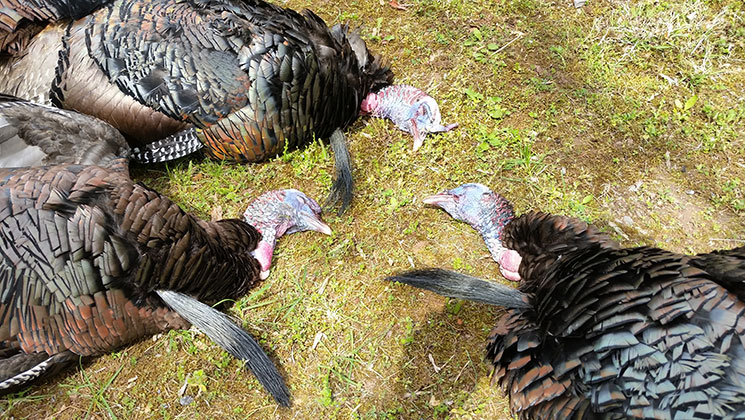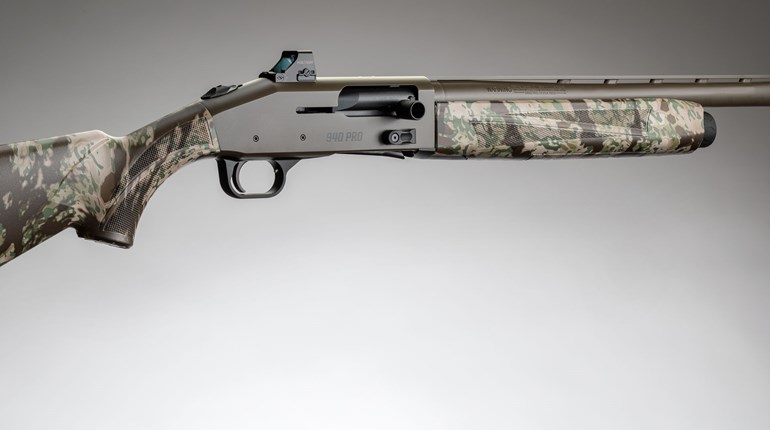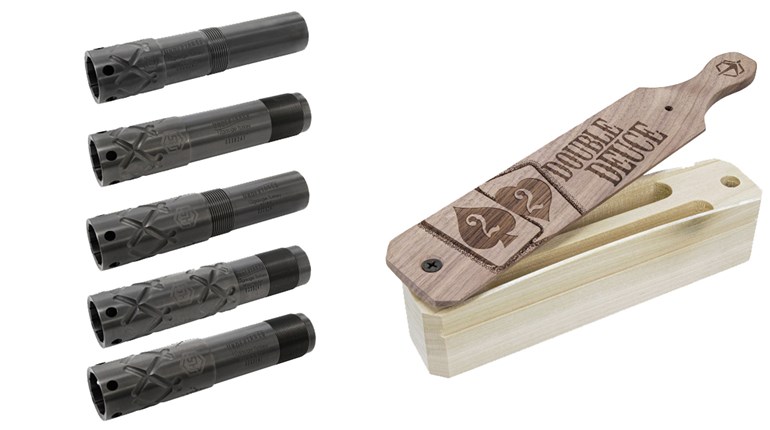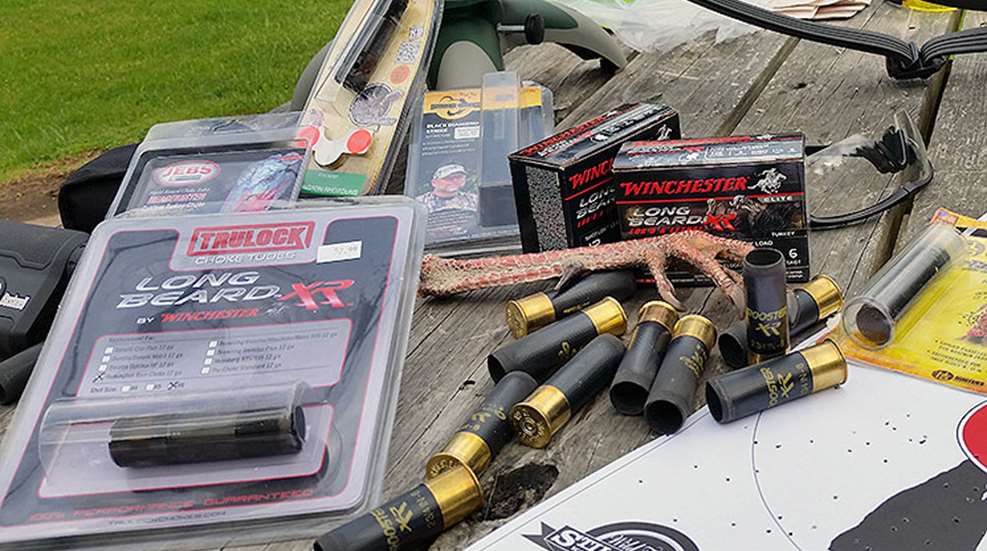
Most turkey hunters have never heard of Sylvester H. Roper. Mr. Roper hailed from New Hampshire and was an innovator of some of the earliest automobiles and motorcycles. He also acquired the first patent for a little item called the screw in choke tube for a shotgun.
Like many great inventions, the choke tube lay mostly unnoticed for many years. Winchester introduced screw in, interchangeable chokes in its revolutionary Model 59 semi-auto in 1961. The WinChoke system didn’t come along until 1969 and it was several years before a majority of shotgunners accepted the screw in choke.
Wild turkey populations increasing in many states during the past 30 years brought spring turkey hunting to the forefront. Camouflage, turkey calls, shot shells and other gear evolved a great deal but maybe none so much as the turkey shotgun and turkey choke tubes. Much of this may be attributed to the fact that we shoot the turkey gun like no other shotgun. We are generally shooting at a (hopefully) stationary target and we are aiming the shotgun, not swinging on a moving target like clays or a passing mallard.
Experienced turkey hunters know the best way to achieve a clean kill is to concentrate as many pellets as possible in the head and neck area of the bird. Going on this premise some would say the best scenario is to have as much shot as possible in a very small circle to cover the head and neck of the turkey, at the range we want to shoot him. Here is where it starts to get tricky.
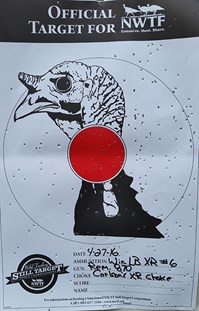 Once upon a time the standard for shotgun patterns was the 30-inch circle and what percentage of the pellets in a shotgun shell was delivered inside that circle. The idea was to have an evenly distributed pattern inside the 30 inches. Modern turkey hunters want something tighter than that.
Once upon a time the standard for shotgun patterns was the 30-inch circle and what percentage of the pellets in a shotgun shell was delivered inside that circle. The idea was to have an evenly distributed pattern inside the 30 inches. Modern turkey hunters want something tighter than that.
There are now dozens of aftermarket chokes available (TruLock Chokes stocks 2,000 different choke tubes) and for the average hunter choosing one can be a daunting task. The concept of this test was to be a simple, down and dirty comparison of some of the popular brands available today. I chose to do things the way the average hunter would: Go to the gun shop or order from the catalog, put the tube in the gun and go shoot it on paper. Use the same shotgun, same ammo and same target with each tube. Shoot the targets and let the pellets fall where they may. Here is how it went.
The Gun
A Remington 870 12 gauge, the model used was an Express Shurshot Synthetic Turkey, but this refers mostly to the stock and forearm. It is basically the same 870 Remington has produced in numbers totaling over 11 million. This 870 was equipped with a TruGlo Tru-Bead Turkey Universal sight, which was beneficial for keeping on target, better than just a plain bead. A scope with a crosshair reticle would be better but the average turkey hunter may not have this on his shotgun. The shotgun also had a Timney 870 replacement trigger installed; which made a difference in squeezing off accurate shots.
The Ammo
Winchester Long Beard XR Turkey Loads, 3 inch, 1 ¾ oz. #6 shot. There is no doubt that this load has been the buzz in the turkey shot shell world for the past few years. Winchester hit a home run when they developed the “Shot-Lok” technology to put a resin like epoxy in the shot load. 60-yard kills on turkeys are often topics of discussion in turkey camps. This test was done at 40 yards, same as the National Wild Turkey Foundation Still Target Challenge.
The Target
NWTF Still Target Challenge target. Although the actual target may not be that important, this kept it uniform. The NWTF target has a 10-inch outer circle, and a three-inch inner circle.
The Numbers
Here are the results of five of the current crop of aftermarket chokes shot on paper: Jeb’s Headhunter, HS Strut Undertaker XT, Trulock Long Beard XR, Indian Creek Diamond Strike and Carlson’s Long Beard XR. The first number is the total number of hits within the 10-inch circle on the target; the second number designates the number of hits in the three-inch inner circle. You'll note that the Trulock submission garnered the most shot in a 10-inch circle, but the Carlson's choke topped all challengers inside the three-inch window.
• HS Strut UnderTaker XT—104/16
• TruLock Long Beard XR—147/20
• Indian Creek Diamond Strike—137/15
• Carlson’s Long Beard XR—141/25
No doubt there will be those who say we didn’t include their favorite choke tube and some will say they can do better than these results. I wholeheartedly agree. A shotgun is still, at the end of the day, a somewhat imprecise weapon with a multitude of variables that can change a test result in a New York minute. Remember this was one shot on paper from each choke tube. Multiple shots with the same tube will often result in different numbers. Could the shooter have pulled off slightly on any one shot? Could something as simple as the wind blowing affect your shot? Absolutely.
If you go through the rigors of shopping for the best choke for your turkey gun remember what you are seeking is the trinity of three factors: the right gun mated with the right choke, with the most compatible shotgun shell. Any one of the above chokes paired with the correct shotgun and load could give you what one of my buddies’ calls “a shotgun that shoots like a house on fire.”
This can only be found by spending a lot of time on the patterning board. Good luck.
